
Recently, it has become relevant to varnish wood products using oils. Therefore, it becomes necessary to compare tung oil and boiled linseed oil. You can read more details about all the similarities and differences in this article. Tung oil vs. boiled linseed oil: comparison, characteristics, advantages and disadvantages, alternatives.
- Tung oil vs. boiled linseed oil: comparison, characteristics, advantages and disadvantages, alternatives
- Features of tung oil
- Features of linseed oil
- Fields of application of linseed and tung oil
- Differences between tung oils and linseed oils
- Tung oil vs. linseed oil: drying speed
- Tung oil vs. linseed oil: moisture resistance
- Tung oil vs. linseed oil: hue
- Tung oil and linseed oil: finishing
- Tung oil vs. linseed oil: durability
- Tung oil VS pure linseed oil: safety
- Tung oil and linseed oil: number of layers
- Pure tung oil and linseed oil: ease of use
- Tung oil and pure linseed oil: general application
- Pure tung oil and linseed oil: price
- Uses of tung oil
- Put on protection
- Wood preparation
- Applying and rubbing in the oil
- Settling of tung oil
- Repeat application and rubbing
- Surplus cleaning
- The use of linseed oil
- Put on protection
- Wood preparation
- Applying and rubbing in the linseed oil
- Linseed oil settling and rework
- Cleaning up excess linseed oil
- Linseed oil and tung oil alternatives
- Mineral oil
- Danish oil
- Is it possible to combine tung and linseed oils?
- Results
Tung oil vs. boiled linseed oil: comparison, characteristics, advantages and disadvantages, alternatives
Before proceeding to compare tung oil and boiled linseed oil, it should be noted that both oils are in demand for varnishing wood grain. This is due to many reasons. The peculiarity of oils is that they improve the quality of the finish, and help protect the product from adverse factors.
Features of tung oil
Before you start comparing two types of oil according to clear criteria, you should start by getting to know these substances. The seeds of the tung tree are used to make tung oil. Such trees grow all over the world, however, only in certain places.
They can be found in Asian countries, including China and Vietnam. Tung oil has always been used to seal and protect the tree from adverse factors.
The main advantages of tung oil are:
- strength;
- safety for humans and animals, food safe;
- resistance to yellowness and fading;
- resistance to water and fungi.
The minuses of tung oil are:
- slowly gets into deep layers of a tree;
- the need to apply several layers.
Features of linseed oil

Dried flax seeds are used in the production of linseed oil. They are carefully pressed. Flax, compared to the tung tree, is quite common throughout the world. That is why the oil is available.
The main advantages of linseed oil are:
- emphasizes the tree structure;
- ease of application;
- soft shine, so the coating looks more aesthetically pleasing;
- resistance to swelling and shrinkage.
The main disadvantages are:
- it is not food safe;
- may develop orange spots over time;
- instability to scratches.
Fields of application of linseed and tung oil
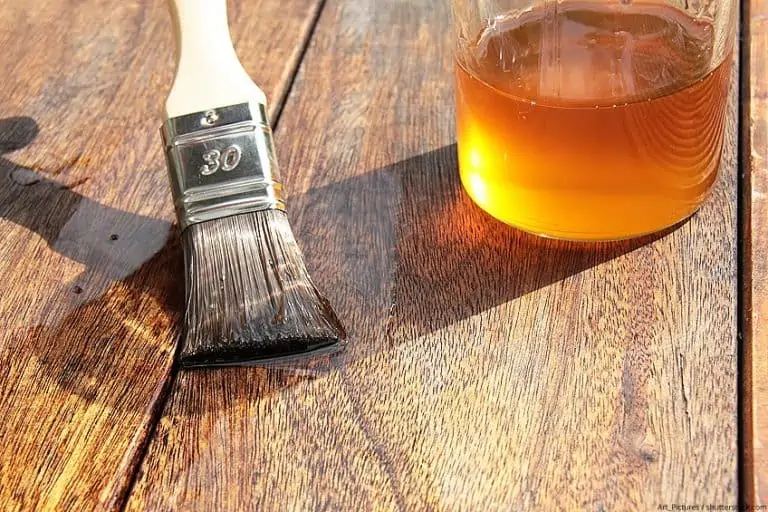
Both oils are in demand if you need to varnish the surface of a tree. However, the choice of means depends on what goals you are pursuing. Both options are characterized by the formation of a smooth protective layer, which helps to improve the appearance of furniture and other wood grain.
At the same time, there is protection from adverse environmental factors that can provoke a deterioration in the quality of the tree. Flaxseed oil is more versatile.
It can be used with both raw linseed oil and hot linseed oil. It is often added to soap, ink, personal care products, and linoleum.
Boiled linseed oil is suitable if you need to varnish items needed for interior furniture. At the same time, the product is safe for humans. Pure tung oil does not belong to the category of universal means because it is used only to protect wooden surfaces.
Pure tung oil is used to give the wood grain a smooth surface and look more like plastic. The tool can be used both for external and internal work. At the same time, pure tung oil looks attractive and additionally protects the product. Even brick, concrete, and metal can be coated with tung oil.
Differences between tung oils and linseed oils

Quite often people wonder, which is better boiled linseed oil or tung oil? To accurately answer this question, you should familiarize yourself with the key points. This allows you to understand which tool is suitable for performing basic work.
Tung oil vs. linseed oil: drying speed
Quite frequently one hears the question, which dries faster, linseed or tung oil? The exact drying time depends on the specific product. Pure tung oil often hardens 2-3 days after application. However, it’s not uncommon to wait just one day if you don’t plan on applying it in multiple layers.
Classic versions of linseed oil can dry out in about 1-3 days. If you use a polymerized linseed oil, it can harden after a day. However, for greater reliability of the coating, you should wait a few days.
In its pure form, linseed oil dries out for several weeks. Often you have to wait about 2-3 weeks. If you need the composition to completely harden, you have to wait 1-1.5 months. It all depends on how many layers you applied.
Tung oil vs. linseed oil: moisture resistance

Pure tung oil is more resistant to moisture because it is distinguished by three cross-links that occur between molecules. However, tung oils and raw linseed oils are not considered completely resistant to moisture. After all, they are not fixed in such a way that a reliable protective coating is created on the surface.
You need to understand that to protect furniture from moisture, it is better to use varnish or shellac, and not various oils. Even if you apply them correctly and wait the right amount of time, 100% protection is not expected.
Tung oil vs. linseed oil: hue

Tung oil and linseed oil, which are sold in containers, have a yellowish tint. However, don’t think that tung oil turn wood yellow. As soon as the composition hardens on the surface, it will remain transparent, so the original shade of the wood is preserved.
If you use raw linseed oil, a slight yellowish coating may initially appear. However, you should not immediately worry about this. Difficulties may arise as soon as after a few weeks the shade is orange. The shade of the tree may change so much that it must be repainted.
Tung oil and linseed oil: finishing
When it comes to finishing, tung oil can make the surface more matte. The surface does not develop a noticeable sheen, which can often be required to improve the aesthetic qualities. However, due to the matte finish, surface imperfections can be smoothed out a little, and do not so noticeable.
The shine does not spoil the natural beauty of the wood. The raw linseed oil and tung oil only slightly give the furniture a slight rustic effect.
If you use linseed oil, the finish has a more pronounced sheen. However, not everyone notes that the surface becomes completely glossy. Some did not appreciate the light glow because it is distinguished by a change in the natural dimension. Furniture with linseed oil is more traditional.
Tung oil vs. linseed oil: durability

If you are interested in the durability of the coating, then opt for tung oil. It is not only water-resistant. It helps to protect the surface from mold and mildew. At the same time, it is resistant to scratches because it has a long drying time. Even if you scratch the coating, it is quite easy to fix it.
Flaxseed oil is flexible. Therefore, it is the best option if you work with softwood. Raw linseed oil is appropriate if you live in a region where the weather causes the tree to swell and shrink. However, linseed oil is not as long-lasting as its opponent.
Linseed oil scratches pretty quickly, so it won’t be the best option if you plan on working on the floor. Especially if the floor is actively used. Linseed oil should not be used on furniture that is used permanently.
Even after treatment, the surface of linseed oil does not resistant to mold and mildew. However, this option is not always relevant. It all depends on which manufacturer you choose.
Tung oil VS pure linseed oil: safety
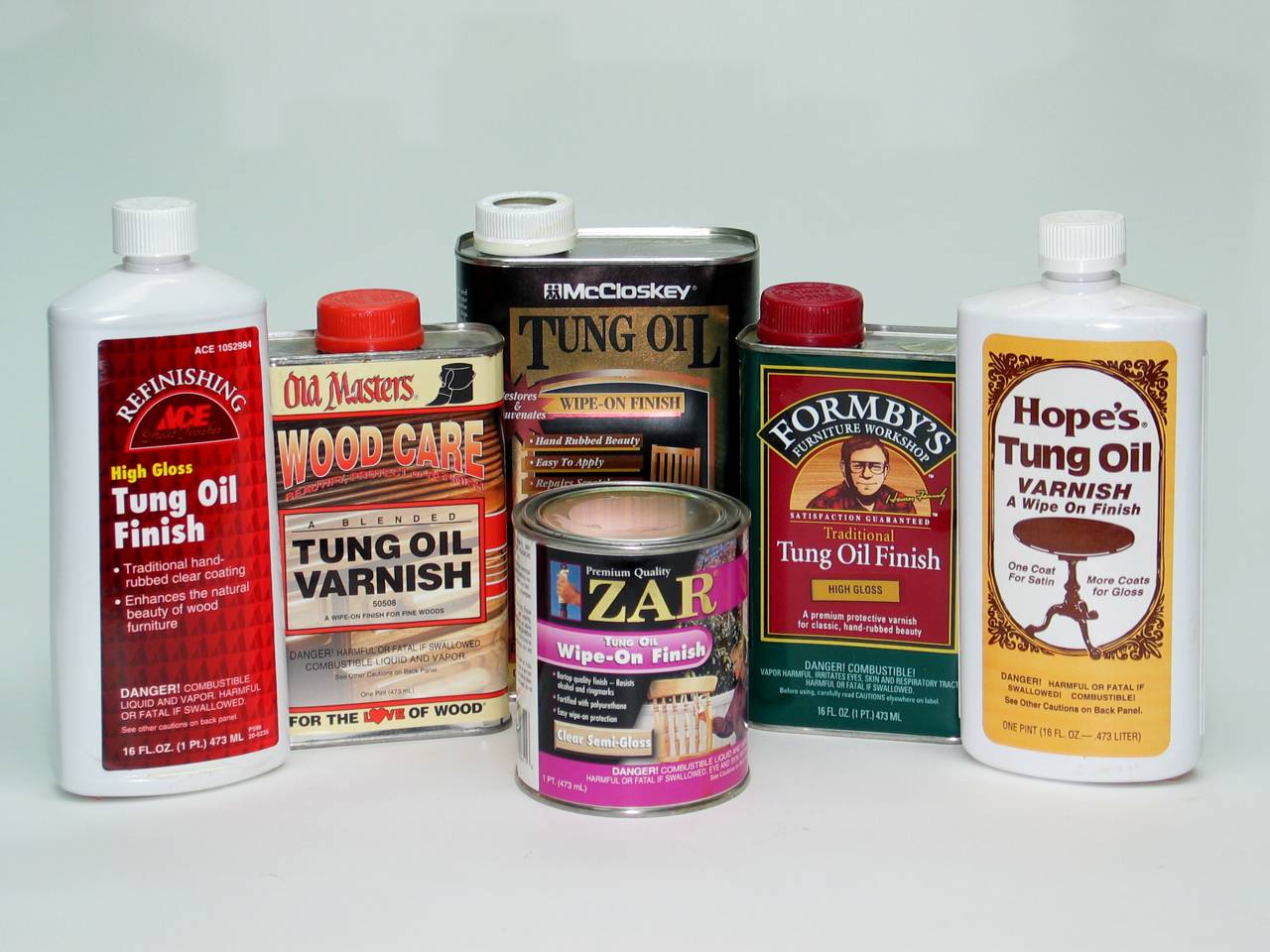
Tung oil is considered safe for animals and humans. Therefore, it can be used to cover furniture and floors, even if you often come into contact with the surface. Tung oil is also food safe. Therefore, it can be used if you need to cover kitchen utensils and dishes.
It is impossible to say with certainty that linseed oil is safe. After all, it all depends on its type. If polymerized linseed oil or pure oil is used, it does not cause any harm to animals or people. It is also food safe. But there are also formulations that it is not people and food safe.
Such formulations may contain volatile organic compounds, which may be harmful if ingested. Therefore, you should carefully read the description of the product before you start using it.
Tung oil and linseed oil: number of layers

Linseed oil is superior to tung oil in the number of necessary layers. Often it is enough to apply only 1-2 layers to make the final result beautiful. A third layer may be required; however, this is in extreme cases.
Tung oil is recommended to be applied in at least 3 layers. This is the only way to guarantee excellent results. There are cases when you have to apply up to 5 layers. Therefore, it takes much more time to complete the work than you expected.
Pure tung oil and linseed oil: ease of use
Working with two compositions is quite easy. Tung oil is natural; therefore it does not contain toxic substances. You can work with it using only a soft cloth. The same recommendations apply if you work with polymerized linseed oil.
If you plan to work with BLO (boiled linseed oil), the situation is somewhat different. This is because such compositions contain aggressive additives, therefore, for safety reasons, you need to work carefully. It is very important to use gloves and goggles to protect your eyes. If you work with BLO, you additionally have to wear a mask or respirator.
Tung oil and pure linseed oil: general application
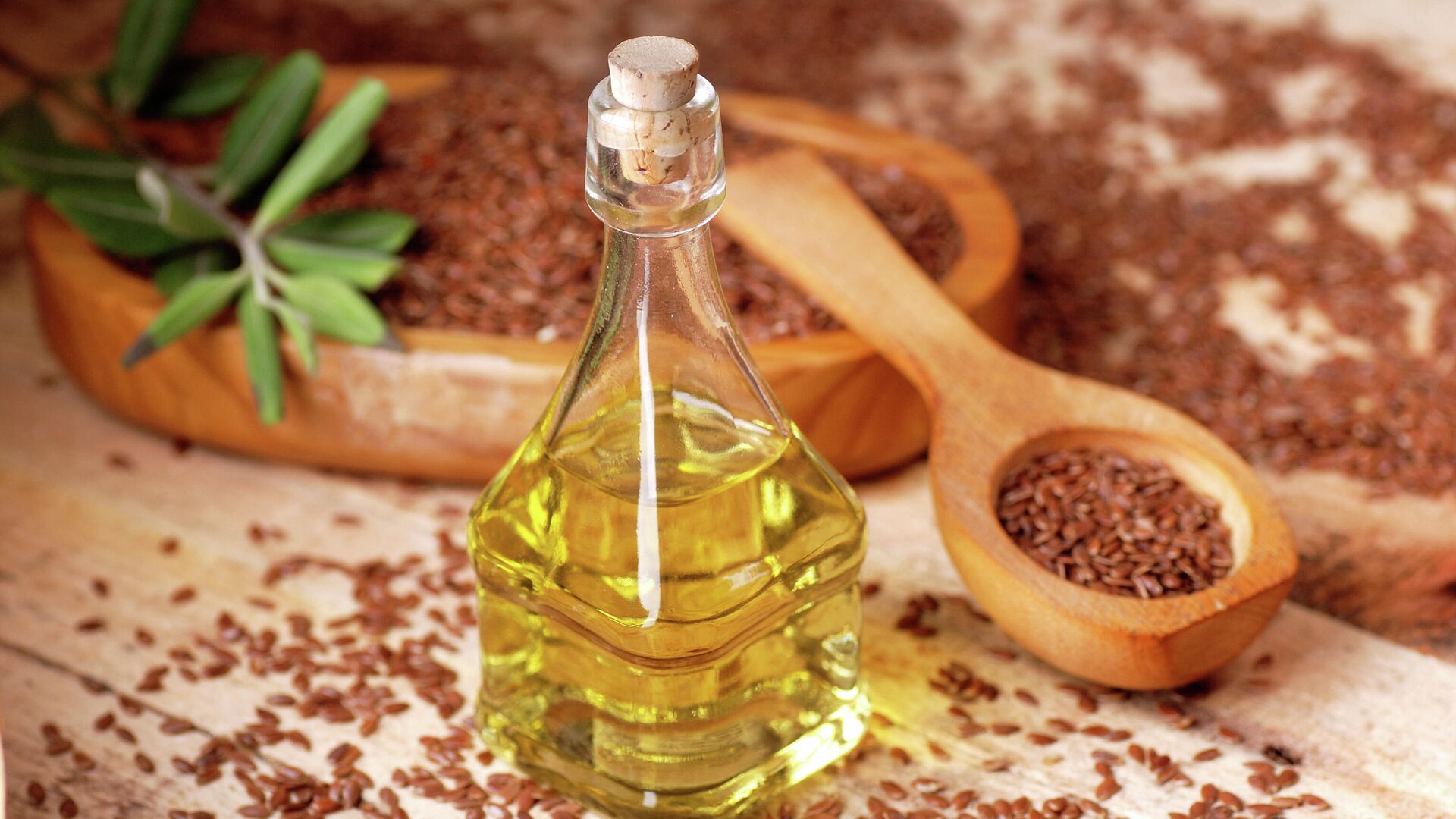
Tung oil does not contain toxins; therefore it is environmentally friendly. This is a universal option that can be used, regardless of the project. They can cover toys, furniture, floors, kitchen utensils, or musical instruments.
Tung oil is often used to coat mahogany. If you work with linseed oil, you need to exercise some caution. This mean is not suitable for things that you contact directly. That is, it is not the best option for toys or the kitchen.
However, linseed oil is a great option if you need to coat furniture. If you use pure or polymerized linseed oil, the possibilities increase. Such compounds do not have toxins, so they can compete with tung oil.
Pure tung oil and linseed oil: price
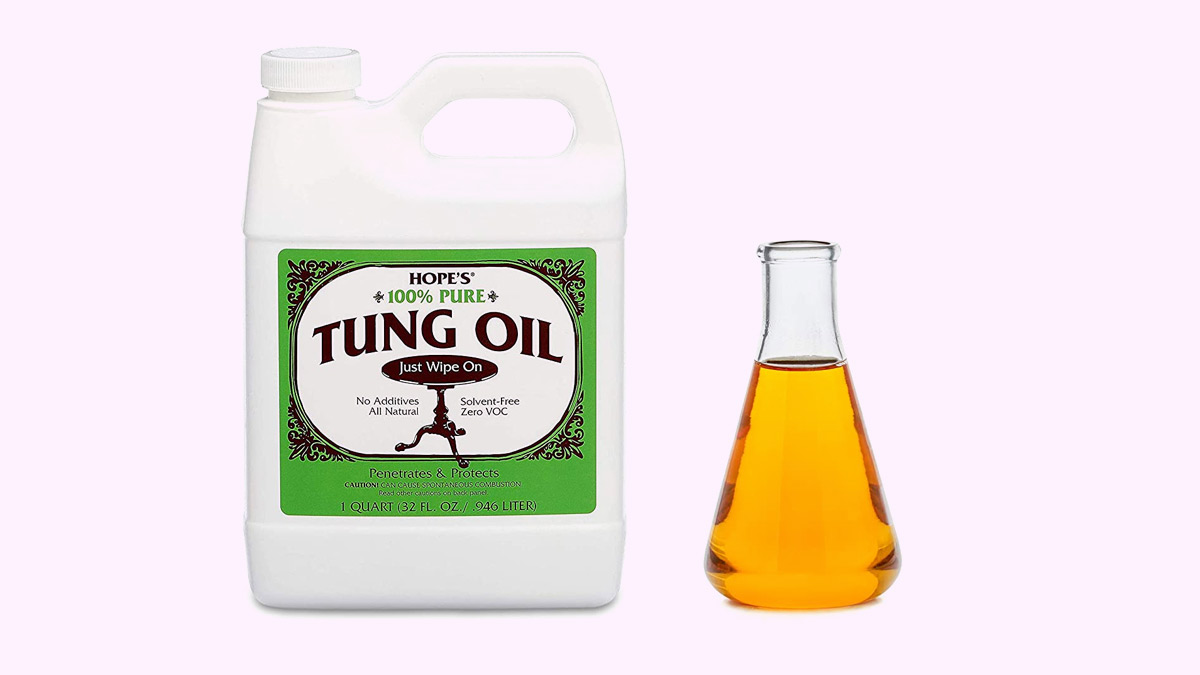
This is not to say that tung oils and linseed oils differ greatly in cost. It all depends on the manufacturer and the class of the product. Considering that tung oil needs to be applied in multiple layers, the overall cost of the project will increase.
Therefore, an assessment of the entire project should be carried out in advance. In particular, if you need to cover a large product from a part. At such times, the most beneficial solution would be to use flaxseed oil. If you work with small items, then it is better to opt for tung oil.
Uses of tung oil
When working with tung oil, certain rules must be followed.
Put on protection
Although tung oil is considered safe, it is best to stock up on a minimum set of protective gear. Just wear eye protection goggles and gloves. If you wish, you can wear a mask.
Wood preparation
Before using tung oil, prepare the surface. The wood needs to be sanded to get a smooth finish. Also, the surface must be cleaned of old finishes so that the oil is absorbed faster.
Applying and rubbing in the oil
When the surface is ready, apply tung oil using a soft, clean cloth. Try to apply some pressure to the surface so that the oil lays evenly and provides optimal coverage.
Settling of tung oil
When finished, leave the product for half an hour so that it is absorbed into the inner layers of the tree. Wipe off excess oil with a cloth.
Repeat application and rubbing
Repeat the above steps with each layer of tung oil. Then check the tung oil finish coat to make sure it is absorbed. The number of layers can be up to five.
Surplus cleaning
Once the result is the way you wanted, remove the excess oil. To do this, use a clean and soft cloth. Then leave the coating to dry completely. This may take several days. After that, you can start using the product.
The use of linseed oil
When working with linseed oil, you also need to follow a few basic rules.
Put on protection
Wear protective equipment before starting work with linseed oil. Gloves and goggles are enough to work with pure or polymerized oil. If you work with more toxic compounds, you should additionally protect your respiratory organs with a respirator or mask.
Wood preparation
Before you start working with linseed oil, you should prepare the surface, which takes a certain amount of time. The surface must be free of finishing materials. After, it needs to be sanded to smoothness.
Applying and rubbing in the linseed oil
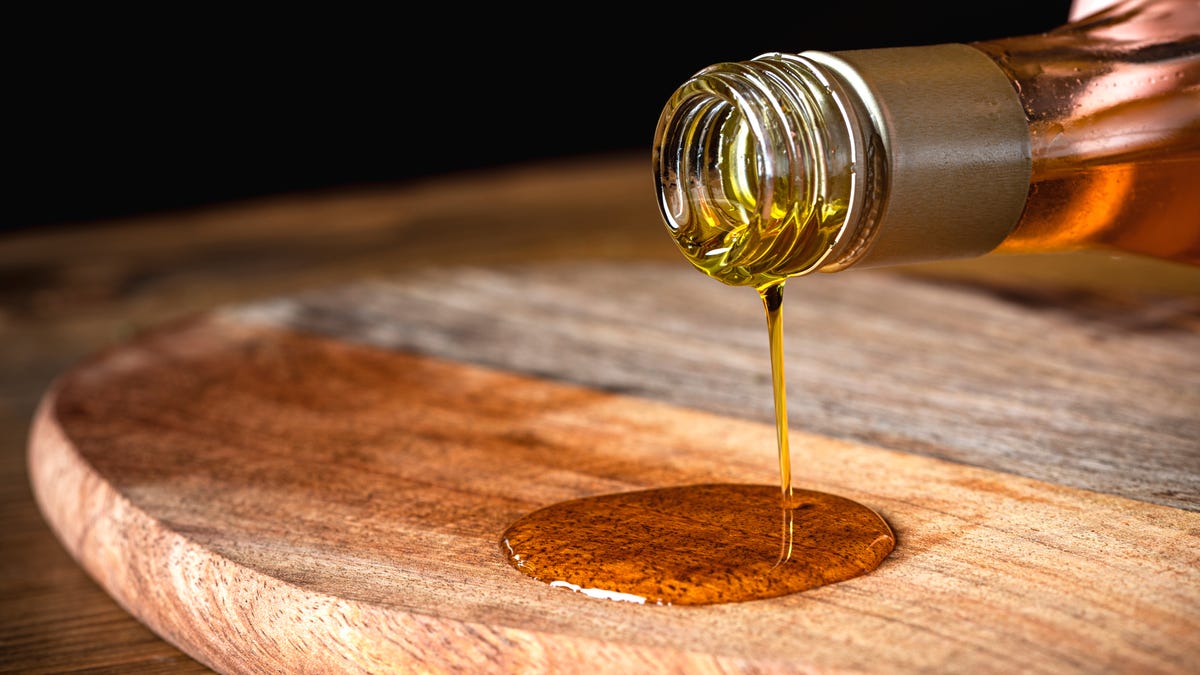
After preparing the wood, you can apply the first layer of linseed oil. At work, it is better to use a soft cloth. You can also use a soft-bristled brush. You need to rub the linseed oil in a circular motion.
Linseed oil settling and rework
On average, the linseed oil hardens within half an hour. If there is excess oil, it must be removed with a soft cloth. After that, subsequent layers should be applied to achieve the desired effect.
Cleaning up excess linseed oil

After applying the last layer of linseed oil, try to remove the maximum amount of excess. Then leave the coating of linseed oil to dry completely, which may take a month and a half. It all depends on what type of linseed oil you used.
Linseed oil and tung oil alternatives
It is not necessary to use tung or linseed oil. If you can’t find them, or if you’re worried about the quality of the work, you can look for linseed oil and tung oil alternatives.
Mineral oil

It is a product that is made from refined crude oil and has a liquid consistency. It has no shade or aroma, so it is ideal for coating wood products. You can find mineral oil in cosmetics. You can read more about the benefits of mineral oil below.
The main advantages of mineral oil include:
- absence of toxic substances in the composition;
- human and food safe;
- ease of application;
- does not change the shade of the wood after application.
The main disadvantages are:
- liquid consistency, therefore, it does not differ in excellent strength;
- instability to scratches and moisture.
Danish oil

This is a mixture that is prepared from tung and vegetable oils. Chemical components are added to the composition, as well as polymerized linseed oil. This mixture combines all the advantages that apply to the above compositions. This is the best option for those who like to experiment.
The main advantages of Danish oil are:
- resistance to moisture;
- ideal for outdoor work;
- it contains tung and linseed oils;
- has an attractive sheen;
- easy to apply and dries quickly.
The minus is fragility, so you have to periodically update the coating.
Is it possible to combine tung and linseed oils?
Quite often people wonder, can you put tung oil over boiled linseed oil? If necessary, you can apply tung oil over flaxseed oil. However, first, you need to make sure that the flaxseed oil has dried. Otherwise, the coating will be ugly and short-lived.
If you applied BLO, then tung oil does not block volatile organic substances that are hazardous to humans and food. Therefore, you risk harming your health.
Results
As you can see, tung and linseed oils are very effective when it comes to wood surfaces. However, each of them has its pros and cons if you work with wooden furniture. Therefore, before choosing and using it, you should study all the information. Wonder is teak oil food safe, read








![What is a Wood Planer? [4 Types of Wood Planers] What Is A Wood Planer: Best Helpful Guide & Top Review](https://bestwoodforcarving.com/wp-content/uploads/2023/12/What-is-a-Wood-Planer-335x220.jpg)


